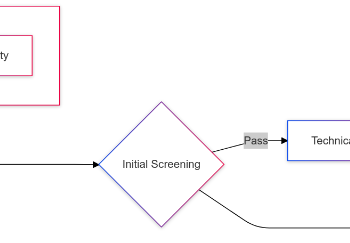Investment demand is a crucial component of any economy, as it drives the expansion of production capabilities and ultimately influences economic growth. Businesses make investment decisions based on a variety of factors, but two of the most significant are economic conditions and interest rates. In this article, we will delve into how these elements shape business investment decisions, exploring their impact on the economy and the long-term implications for growth.
- What is NFT Finance? Market Mechanisms, Infrastructure, and Economic Impact
- Understanding the Free Look Period: Your Safety Net in Insurance and Investment Decisions
- Maximizing Impact: A Comprehensive Guide to Foreign Aid in Global Finance and Development
- Unlocking the Expectations Theory: How Long-Term Interest Rates Predict Future Short-Term Rates
- Maximize Generational Wealth: The Ultimate Guide to Dynasty Trusts and Tax Minimization
What is Investment Demand?
Investment demand refers to the desire of businesses to invest in capital goods such as machinery, buildings, and technology. This type of investment is essential for enhancing production capabilities and increasing the overall productive capacity of an economy. When businesses invest in new equipment or expand their facilities, they are not only improving their own efficiency but also contributing to the broader economic growth.
Bạn đang xem: Understanding Investment Demand: How Economic Conditions and Interest Rates Shape Business Investment Decisions
The types of capital goods that businesses invest in can vary widely. For instance, a manufacturing company might invest in new machinery to increase production output, while a tech firm might invest in software development to enhance its product offerings. These investments not only improve the company’s productivity but also create jobs and stimulate economic activity.
The Impact of Interest Rates on Investment Demand
Interest rates play a pivotal role in shaping business investment decisions. When interest rates are low, borrowing becomes cheaper, making it more attractive for businesses to take out loans to finance their investments. This reduces the cost of borrowing and increases the opportunity cost of investment, making potential projects more profitable.
The relationship between interest rates and investment demand is illustrated by the investment demand curve. Lower interest rates shift this curve to the right, indicating an increase in investment demand. Conversely, higher interest rates make borrowing more expensive, reducing the attractiveness of investment projects and shifting the curve to the left.
For example, during periods of low interest rates, companies may find it more feasible to undertake large-scale projects that might have been too costly otherwise. On the other hand, high interest rates can deter businesses from investing due to higher borrowing costs.
Economic Conditions and Business Investment
Broader economic conditions, such as economic growth and the business cycle, significantly influence business investment decisions. The accelerator theory suggests that changes in the rate of economic growth drive changes in investment spending. When the economy is growing rapidly, businesses are more likely to invest in new projects because they anticipate higher future demand for their products.
Xem thêm : Maximize Your Savings: A Comprehensive Guide to the Child Tax Credit
During economic expansions, businesses tend to be more optimistic about future prospects and are more likely to invest heavily. In contrast, during recessions, businesses often cut back on investments due to reduced consumer demand and higher uncertainty.
Historical examples illustrate this point well. For instance, during the post-World War II economic boom, many countries experienced high levels of business investment as companies expanded their operations to meet growing consumer demand.
Business Confidence and Expectations
Business confidence and future expectations are critical factors influencing investment decisions. When businesses are confident about future demand for their products and optimistic about the overall economic climate, they are more likely to invest.
However, predicting business confidence can be challenging due to its subjective nature. Economic policymakers often face difficulties in gauging business sentiment accurately, which can complicate policy decisions aimed at stimulating investment.
Other Factors Influencing Investment Demand
In addition to interest rates and economic conditions, several other factors influence investment demand. Technological developments can significantly impact the productivity of capital goods, making them more attractive investments. For example, advancements in automation technology have led many manufacturing companies to invest heavily in robotic systems.
The availability of finance, including savings and credit, also plays a crucial role. Businesses need access to capital to fund their investments, so a robust financial system with ample savings and credit facilities is essential for supporting high levels of investment.
Other factors such as inflation, wage costs, and depreciation also affect investment decisions. High inflation can erode the value of future returns on investments, while high wage costs can increase the cost of production. Depreciation rates can influence how quickly businesses recover their investment costs.
Long-term Implications of Investment Demand
Xem thêm : What is Mining Pool? A Technical Analysis of Collaborative Cryptocurrency Mining
Increased investment has profound long-term implications for economic growth and living standards. Higher levels of business investment lead to a larger physical capital stock, which enhances the economy’s productive capacity. This, in turn, drives higher economic growth and improved living standards over time.
Comparative statistics illustrate this point clearly. Countries with high levels of business investment tend to have higher GDP growth rates and better standards of living compared to those with lower investment levels.
References
-
Keynes, J.M. (1936). The General Theory of Employment, Interest and Money. Macmillan.
-
Samuelson, P.A., & Nordhaus, W.D. (2005). Economics. McGraw-Hill.
-
Mankiw, N.G. (2014). Principles of Macroeconomics. Cengage Learning.
-
Krugman, P.R., & Obstfeld, M. (2009). International Trade: Theory and Evidence. Pearson Education.
-
Blanchard, O.J., & Johnson, D.R. (2013). Macroeconomics. Pearson Education.
Nguồn: https://staredecisis.quest
Danh mục: Blog





